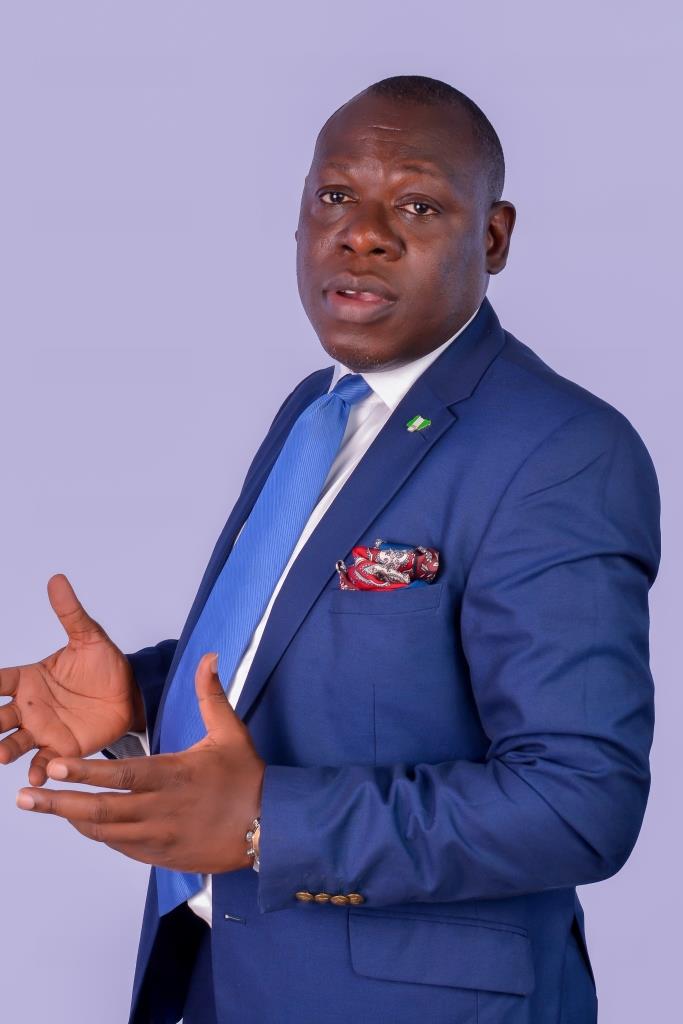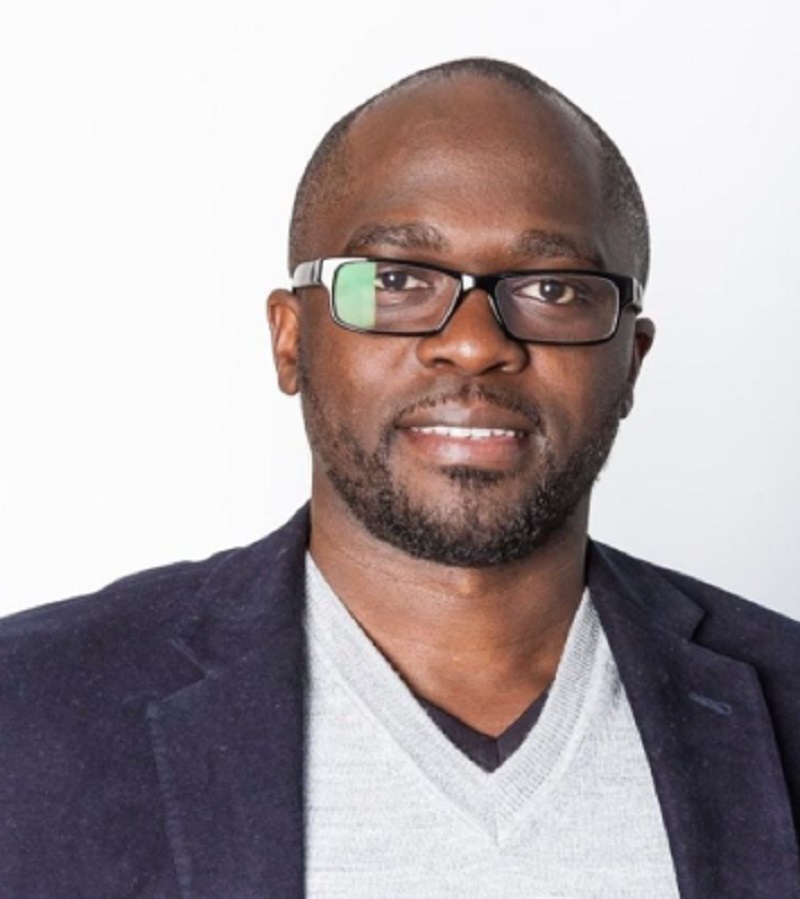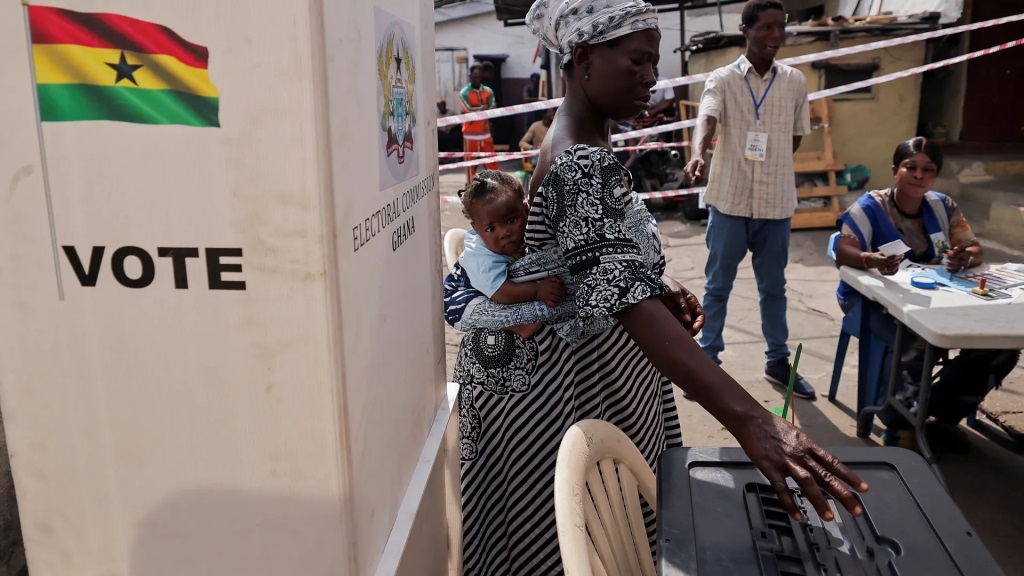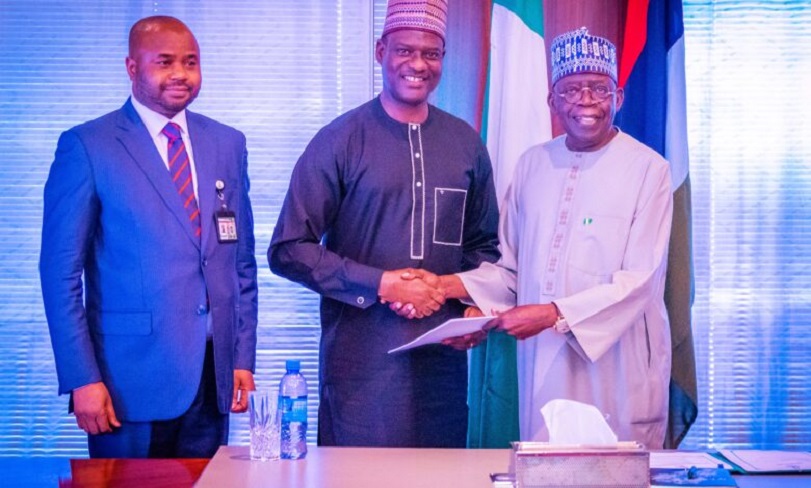Feature/OPED
Making Most of Sachet Model: Changing Banking, Insurance, Real Estate, Investment and Telecoms Landscape

By Timi Olubiyi, PhD
Sachets dominate the retail industry, particularly the Fast-Moving Consumer Goods (FMCG), in many parts of Africa but more significantly in Nigeria, where the population is high and there is a huge demand for consumer goods.
Therefore, sachet products or single-serve packs, as they are normally called in the FMCG industry, are dominating the retail landscape and they are products that can be consumed at once or ready for single usage.
In colloquial terms, the model is referred to “sachetisation” which is known to have kicked off in Nigeria in the ’90s with the making of smaller sachets of drinking water (pure water) and Cowbell powdered milk by Promasidor.
Then, the idea was necessitated by innovation to penetrate the larger low- or no-income populace, however, the idea was later followed by intense and stiff competition.
Today, literature suggests that over 60 million units of pure water is consumed per day with loads of other sachet pack products in Nigeria.
The sachet trend has continued to expand due to shrinking income levels, wide-spread hardship, and rising poverty amongst the populace and these no doubt have caused the growing adoption of sachet packs in the country in recent times.
More so, for companies, the tough operating environment, decrepit infrastructure, porous borders, waning bulk consumption has further heightened the need for the sachet model adoption.
Both individuals and businesses are feeling the weight of the economic challenges and over time, the disposable income of consumers continues to wane. Besides, the novel coronavirus (COVID-19) pandemic, economic recession and the high inflation rate in recent times in the country have also continued to worsen the situation, majorly eroding the purchasing power of many individuals, households, and even companies.
The current economic situation has also made products and services more expensive nationwide. In fact, many manufacturing companies are witnessing reduced patronage because not everyone can afford the bulk purchase or regular packs, and consumers continue to look for cheaper alternatives.
So, “sachetisation” is a business strategy and an alternative to engaging customers continually in this trying time. The idea is to make products affordable to consumers, in particular, the majority that are daily income earners and that constitute the large chunk of the country’s population.
Most companies have resolved to adopt the “sachetisation” model to give some of the poorest people in Nigeria access to everyday household essentials with ease and for continuous patronage.
In fact, companies continue to innovate and roll out sachet products to enable them to penetrate the larger low-income markets which are the worst-hit economically. Also, for the companies this time, it is a way to increase sales within the customers who cannot afford to buy in larger quantities.
History has it that “sachetisation” is not something that just began in Nigeria of Africa. The ‘sachetised’ products have long been part of the Indian culture, which is believed to have pioneered the bite-sizing of consumers’ products and commodities some 70 years ago, beginning with tea, of course, in small paper pouches tucking precious leaves just enough to make tea for two.
Even though the sachet model saves wastage with portion control, it requires minimum packaging materials, less storage, low shipping, and transportation cost, and most importantly, it is pocket friendly to the end-users.
However, the painful truth and disclosure are that this trend is an indication of income inequality, unaffordability, the wide gap between the haves and have nots, high unemployment rate, dwindling economy, and high level of poverty in the country.
Supportably, the National Bureau of Statistics (NBS) in the “2019 Poverty and Inequality in Nigeria” report highlights that 40 per cent of the total population, or almost 83 million people, live below the country’s poverty line of N137,430 ($381.75) per year.
This figure even appears underestimated in my opinion due to lack of data on the extremely huge informal sector of the country.
However, these sachet products give the poor in the country the access to everyday household essentials even though their disposable income continues to shrink in real terms.
From observation, hardly is there any market leading FMCG company in Nigeria that has not manufactured a single-serve pack (sachet packed product) just to capture the poor consumers.
To buttress the adoption of this model, the various operators in the open markets in the country, unknowingly practice the sachet model on perishables, vegetables, and foodstuffs freely; all due to economic reasons and the waning purchasing power of the consumers.
The regular essential consumables that are noticeable in sachet are milk, detergent, cooking oil, cereal, margarine, liquor, pepper mix (pepper, tomatoes and onions), toothpaste, sugar, tomato sauce, shampoo, cornflakes, seasoning/spices, biscuits, dishwashing liquid, shaving sticks, cereals, bleach, Lipton sachet with just two tea bags, diaper sachet with just two units, disinfectant and energy drink amongst others.
From sampled opinion, this sachet trend is on the increase in a bid for companies to continue to increase market share, increase market penetration, and remain competitive.
The important thing is that the trend is now becoming increasingly popular and even choice brands are not left out of the growing wave.
An example is the revered creamy liquor brand, Baileys, which has always packaged its products in special bottles of different sizes, has adopted “sachetisation” as well. This is to encourage quick sell and increase competitiveness in the consumer goods space, where affordability continues to be a big issue.
It is a common argument that consumer goods are needed by humans irrespective of social class to reasonably live and survive. But the common trend in Nigeria is that the low-income earners, also known as Bottom of the Pyramid (BOP), most time ends up paying more for consumer products than the rich who buy the regular packs and sometimes in huge quantities.
Simply put, the poor pay more than the rich for the same basic products in real terms in Nigeria.
For instance, the retail price of a 50g sachet of cereal is N100, 10 sachets cost N1000 (50g X 10 = 500g). However, the retail price of a 500g pack is N750.
Conspicuously, purchasing 500g sachets of cereal cost approximately 33% more. Even imagine, in some cases, an additional 50g to 100g comes as an extra giveaway on a 500g pack when purchased during promotion time at no cost. The reality is that poor Nigerians are under-served and over-charged with consumer goods while the rich spend even less.
Importantly, companies need to note that the population of the poor in the country continues to grow, indicating that those unwilling to flow with the sachet trend will be at risk of running out of business.
Considering the economic grieves in the country, the trend is beneficial as regards patronage, sales, and business continuity. No doubt, the sachet model is on the increase in the country and it is currently a winning strategy to sell what a large percentage of the population can afford.
All said, the points raised above are not to completely justify “sachetisation” as a business strategy but to also implore the government to look at measures to tackle multidimensional poverty- which includes food security, housing, health, education, and security which directly impact the wellbeing of the populace.
Therefore, government poverty reduction aspirations need to be heightened to mitigate the chronic hardship in the country and socio-economic plans need to be in place to lift more people out of extreme poverty and this should be a priority now.
The environmental implications particularly waste disposal is another huge matter that seems to require great attention because sachets add to the compounding problem of pollution in the country.
Therefore, key policies and measures to encourage proper waste management, and recycling in the country should also be considered to avoid huge environmental pollution.
In conclusion, context observation indicates “sachetisation” is now more like a necessity than an option in the country due to increased deprivation in myriad aspects of life.
The telecommunication and some real estate companies in the country are currently exploring the sachet model with their various smart (sachet) pack products with daily payment options.
Above all, it is not even out of place to mention that just like these companies and the FMCG, the financial sector- banking, insurance, and investment management companies and even the Cable TV operators can ‘sachetised’ to make services more accessible and affordable for the masses.
However, leveraging innovation and technology will be of great significance to achieve this. Good luck!
How may you obtain advice or further information on the article?
Dr Timi Olubiyi, an Entrepreneurship & Business Management expert with a PhD in Business Administration from Babcock University Nigeria. A prolific investment coach, seasoned scholar, Chartered Member of the Chartered Institute for Securities & Investment (CISI), and Securities & Exchange Commission (SEC) registered capital market operator. He can be reached on the Twitter handle @drtimiolubiyi and via email: [email protected], for any questions, reactions, and comments.
Feature/OPED
The Future of Payments: Key Trends to Watch in 2025

By Luke Kyohere
The global payments landscape is undergoing a rapid transformation. New technologies coupled with the rising demand for seamless, secure, and efficient transactions has spurred on an exciting new era of innovation and growth. With 2025 fast approaching, here are important trends that will shape the future of payments:
1. The rise of real-time payments
Until recently, real-time payments have been used in Africa for cross-border mobile money payments, but less so for traditional payments. We are seeing companies like Mastercard investing in this area, as well as central banks in Africa putting focus on this.
2. Cashless payments will increase
In 2025, we will see the continued acceleration of cashless payments across Africa. B2B payments in particular will also increase. Digital payments began between individuals but are now becoming commonplace for larger corporate transactions.
3. Digital currency will hit mainstream
In the cryptocurrency space, we will see an increase in the use of stablecoins like United States Digital Currency (USDC) and Tether (USDT) which are linked to US dollars. These will come to replace traditional cryptocurrencies as their price point is more stable. This year, many countries will begin preparing for Central Bank Digital Currencies (CBDCs), government-backed digital currencies which use blockchain.
The increased uptake of digital currencies reflects the maturity of distributed ledger technology and improved API availability.
4. Increased government oversight
As adoption of digital currencies will increase, governments will also put more focus into monitoring these flows. In particular, this will centre on companies and banks rather than individuals. The goal of this will be to control and occasionally curb runaway foreign exchange (FX) rates.
5. Business leaders buy into AI technology
In 2025, we will see many business leaders buying into AI through respected providers relying on well-researched platforms and huge data sets. Most companies don’t have the budget to invest in their own research and development in AI, so many are now opting to ‘buy’ into the technology rather than ‘build’ it themselves. Moreover, many businesses are concerned about the risks associated with data ownership and accuracy so buying software is another way to avoid this risk.
6. Continued AI Adoption in Payments
In payments, the proliferation of AI will continue to improve user experience and increase security. To detect fraud, AI is used to track patterns and payment flows in real-time. If unusual activity is detected, the technology can be used to flag or even block payments which may be fraudulent.
When it comes to user experience, we will also see AI being used to improve the interface design of payment platforms. The technology will also increasingly be used for translation for international payment platforms.
7. Rise of Super Apps
To get more from their platforms, mobile network operators are building comprehensive service platforms, integrating multiple payment experiences into a single app. This reflects the shift of many users moving from text-based services to mobile apps. Rather than offering a single service, super apps are packing many other services into a single app. For example, apps which may have previously been used primarily for lending, now have options for saving and paying bills.
8. Business strategy shift
Recent major technological changes will force business leaders to focus on much shorter prediction and reaction cycles. Because the rate of change has been unprecedented in the past year, this will force decision-makers to adapt quickly, be decisive and nimble.
As the payments space evolves, businesses, banks, and governments must continually embrace innovation, collaboration, and prioritise customer needs. These efforts build a more inclusive, secure, and efficient payment system that supports local to global economic growth – enabling true financial inclusion across borders.
Luke Kyohere is the Group Chief Product and Innovation Officer at Onafriq
Feature/OPED
Ghana’s Democratic Triumph: A Call to Action for Nigeria’s 2027 Elections

In a heartfelt statement released today, the Conference of Nigeria Political Parties (CNPP) has extended its warmest congratulations to Ghana’s President-Elect, emphasizing the importance of learning from Ghana’s recent electoral success as Nigeria gears up for its 2027 general elections.
In a statement signed by its Deputy National Publicity Secretary, Comrade James Ezema, the CNPP highlighted the need for Nigeria to reclaim its status as a leader in democratic governance in Africa.
“The recent victory of Ghana’s President-Elect is a testament to the maturity and resilience of Ghana’s democracy,” the CNPP stated. “As we celebrate this achievement, we must reflect on the lessons that Nigeria can learn from our West African neighbour.”
The CNPP’s message underscored the significance of free, fair, and credible elections, a standard that Ghana has set and one that Nigeria has previously achieved under former President Goodluck Jonathan in 2015. “It is high time for Nigeria to reclaim its position as a beacon of democracy in Africa,” the CNPP asserted, calling for a renewed commitment to the electoral process.
Central to CNPP’s message is the insistence that “the will of the people must be supreme in Nigeria’s electoral processes.” The umbrella body of all registered political parties and political associations in Nigeria CNPP emphasized the necessity of an electoral system that genuinely reflects the wishes of the Nigerian populace. “We must strive to create an environment where elections are free from manipulation, violence, and intimidation,” the CNPP urged, calling on the Independent National Electoral Commission (INEC) to take decisive action to ensure the integrity of the electoral process.
The CNPP also expressed concern over premature declarations regarding the 2027 elections, stating, “It is disheartening to note that some individuals are already announcing that there is no vacancy in Aso Rock in 2027. This kind of statement not only undermines the democratic principles that our nation holds dear but also distracts from the pressing need for the current administration to earn the trust of the electorate.”
The CNPP viewed the upcoming elections as a pivotal moment for Nigeria. “The 2027 general elections present a unique opportunity for Nigeria to reclaim its position as a leader in democratic governance in Africa,” it remarked. The body called on all stakeholders — including the executive, legislature, judiciary, the Independent National Electoral Commission (INEC), and civil society organisations — to collaborate in ensuring that elections are transparent, credible, and reflective of the will of the Nigerian people.
As the most populous African country prepares for the 2027 elections, the CNPP urged all Nigerians to remain vigilant and committed to democratic principles. “We must work together to ensure that our elections are free from violence, intimidation, and manipulation,” the statement stated, reaffirming the CNPP’s commitment to promoting a peaceful and credible electoral process.
In conclusion, the CNPP congratulated the President-Elect of Ghana and the Ghanaian people on their remarkable achievements.
“We look forward to learning from their experience and working together to strengthen democracy in our region,” the CNPP concluded.
Feature/OPED
The Need to Promote Equality, Equity and Fairness in Nigeria’s Proposed Tax Reforms

By Kenechukwu Aguolu
The proposed tax reform, involving four tax bills introduced by the Federal Government, has received significant criticism. Notably, it was rejected by the Governors’ Forum but was still forwarded to the National Assembly. Unlike the various bold economic decisions made by this government, concessions will likely need to be made on these tax reforms, which involve legislative amendments and therefore cannot be imposed by the executive. This article highlights the purposes of taxation, the qualities of a good tax system, and some of the implications of the proposed tax reforms.
One of the major purposes of taxation is to generate revenue for the government to finance its activities. A good tax system should raise sufficient revenue for the government to fund its operations, and support economic and infrastructural development. For any country to achieve meaningful progress, its tax-to-GDP ratio should be at least 15%. Currently, Nigeria’s tax-to-GDP ratio is less than 11%. The proposed tax reforms aim to increase this ratio to 18% within the next three years.
A good tax system should also promote income redistribution and equality by implementing progressive tax policies. In line with this, the proposed tax reforms favour low-income earners. For example, individuals earning less than one million naira annually are exempted from personal income tax. Additionally, essential goods and services such as food, accommodation, and transportation, which constitute a significant portion of household consumption for low- and middle-income groups, are to be exempted from VAT.
In addition to equality, a good tax system should ensure equity and fairness, a key area of contention surrounding the proposed reforms. If implemented, the amendments to the Value Added Tax could lead to a significant reduction in the federal allocation for some states; impairing their ability to finance government operations and development projects. The VAT amendments should be holistically revisited to promote fairness and national unity.
The establishment of a single agency to collect government taxes, the Nigeria Revenue Service, could reduce loopholes that have previously resulted in revenue losses, provided proper controls are put in place. It is logically easier to monitor revenue collection by one agency than by multiple agencies. However, this is not a magical solution. With automation, revenue collection can be seamless whether it is managed by one agency or several, as long as monitoring and accountability measures are implemented effectively.
The proposed tax reforms by the Federal Government are well-intentioned. However, all concerns raised by Nigerians should be looked into, and concessions should be made where necessary. Policies are more effective when they are adapted to suit the unique characteristics of a nation, rather than adopted wholesale. A good tax system should aim to raise sufficient revenue, ensure equitable income distribution, and promote equality, equity, and fairness.
-

 Feature/OPED5 years ago
Feature/OPED5 years agoDavos was Different this year
-
Travel/Tourism8 years ago
Lagos Seals Western Lodge Hotel In Ikorodu
-

 Showbiz2 years ago
Showbiz2 years agoEstranged Lover Releases Videos of Empress Njamah Bathing
-

 Banking6 years ago
Banking6 years agoSort Codes of GTBank Branches in Nigeria
-

 Economy2 years ago
Economy2 years agoSubsidy Removal: CNG at N130 Per Litre Cheaper Than Petrol—IPMAN
-

 Banking2 years ago
Banking2 years agoFirst Bank Announces Planned Downtime
-

 Sports2 years ago
Sports2 years agoHighest Paid Nigerian Footballer – How Much Do Nigerian Footballers Earn
-

 Technology4 years ago
Technology4 years agoHow To Link Your MTN, Airtel, Glo, 9mobile Lines to NIN













